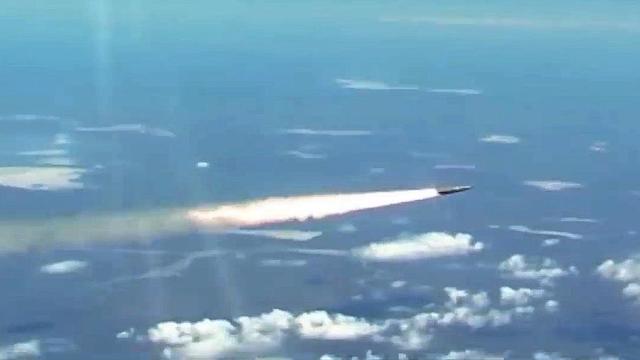Military observer of Izvestia Anton Lavrov — on the purpose of Russia's deployment of hypersonic weapons in the Kaliningrad exclave On Thursday, August 18, three upgraded MiG-31I aircraft with suspended hypersonic Kinzhal missiles landed at the Chkalovsk military airfield near Kaliningrad.
At the beginning of February of this year, a pair of MiG-31s with suspended weapons similar to a "Dagger" were already temporarily transferred there. But then they stayed there for a short time and "unofficially". Now, the Russian Defense Ministry has defiantly announced the beginning of round-the-clock combat duty of the Russian hypersonic complex in the Kaliningrad region and did not specify how long it would stay there.
Today, the most long—range weapons deployed in Kaliningrad are "smart" and high-precision missiles of the Iskander-M complex. Its aeroballistic ammunition reaches 300 km, cruise missiles can fly up to 500 km. This is more than enough to project force on the strip along the borders of the Kaliningrad region, but not on the whole of Europe. Even the supply of Iskanders caused a storm of indignation in NATO.
Hypersonic "Daggers" that cannot be shot down by modern air defense with their range of 2000 km are capable of reaching the borders of many particularly hostile states. Thus, the entire territory of Great Britain falls within the reach of the airline complexes located near Kaliningrad, whose reconnaissance aircraft violated the state border of Russia at Cape Svyatoy Nos on the coast of the Kola Peninsula on Tuesday. During the Cold War, the area that NATO does not recognize as part of the USSR and Russia was constantly a hot spot and a place to play on the nerves of sailors and pilots of opposing groups, which led to more than one tragedy.
The return to provocative actions off the northern shores of Russia now looks like a clear and senseless escalation on the part of the UK. The recent statement by the Estonian authorities about their intention to turn the Baltic into a "NATO inland sea" and close the exit of Russian warships into it did not contribute to detente in the international situation. By sending the MiG-31I to Kaliningrad, Moscow demonstrates its readiness to accept the challenge and, in turn, raise the stakes in the ongoing confrontation with the collective West and NATO.
Now MiGs with "Daggers" are no longer experimental weapons. In 2018, when their existence was openly announced, there was only an experimental combat squadron of a dozen vehicles. In December last year, a separate aviation regiment with hypersonic missiles was formed. The launches of the Daggers worked in a variety of climatic conditions — from the hot Astrakhan steppes to the cold Arctic.
Last summer, MiG-31s with their hypersonic weapons were abroad for the first time, visiting Syria to participate in exercises. It is difficult to resist the idea that their unofficial task was to demonstrate the strength of a British aircraft carrier group operating nearby in the Mediterranean Sea. It was the Defender destroyer from its composition that violated the state border near Crimea a few days before the Syrian visit of Russian aircraft. Since then, the VKS has only gained practical experience in the use of innovative weapons.
The use of "Daggers" in a special military operation in Ukraine showed what goals are considered worthy for them. They were first used on March 19. Then an underground warehouse of missiles and aerial bombs in Delyatin, Ivano-Frankivsk region, was destroyed. The next day, they hit a large fuel and lubricants storage base of the Ukrainian armed forces in the Mykolaiv region, well covered by air defense complexes. On April 11, the "Daggers" struck the buried command post of the Ukrainian troops in the Donbas.
The launches were carried out by MiG-31I fighters from a distance of over 1 thousand km. The distance from Moscow to Kaliningrad, flying 10 times faster than sound, the rocket overcame in less than 10 minutes. It is for such speeds of hypersonic ammunition that they are now feared all over the world. Not only are they impossible to shoot down, but they leave very little time to react to a blow — to warn the target of danger, to let her evacuate or change her position.
A little more than a week ago, on August 7, the Ukrainian Air Force recognized a successful strike on a military facility near Vinnytsia. According to the Ukrainian side, the "Dagger" was used again. The air defense system "missed" the arrival of missiles, and the air alarm was turned on after the explosions. The Russian Defense Ministry did not comment on the Ukrainian application for the use of a hypersonic complex.
Even ordinary "Daggers" are formidable weapons. But as with many other missiles of this range, it can be equipped with a "special warhead" — a military euphemism for a nuclear warhead. Although the defense department did not report on their development or testing, President Putin personally put an end to the issue. In a message to the Federal Assembly, he said that the Daggers can carry not only a conventional, but also a nuclear warhead.
It looks incredible that the complexes that arrived in Chkalovsk were with "special combat units". And by themselves, three planes with several conventional, albeit hypersonic missiles, are not a threat to greater Europe. But this is a reminder to her that the parties in the new cold war still have a lot to raise the stakes. And at the same time a call to think about defining some rules of the game and the limits of escalation.
The author is a military observer of IzvestiaThe editorial board's position may not coincide with the author's opinion

